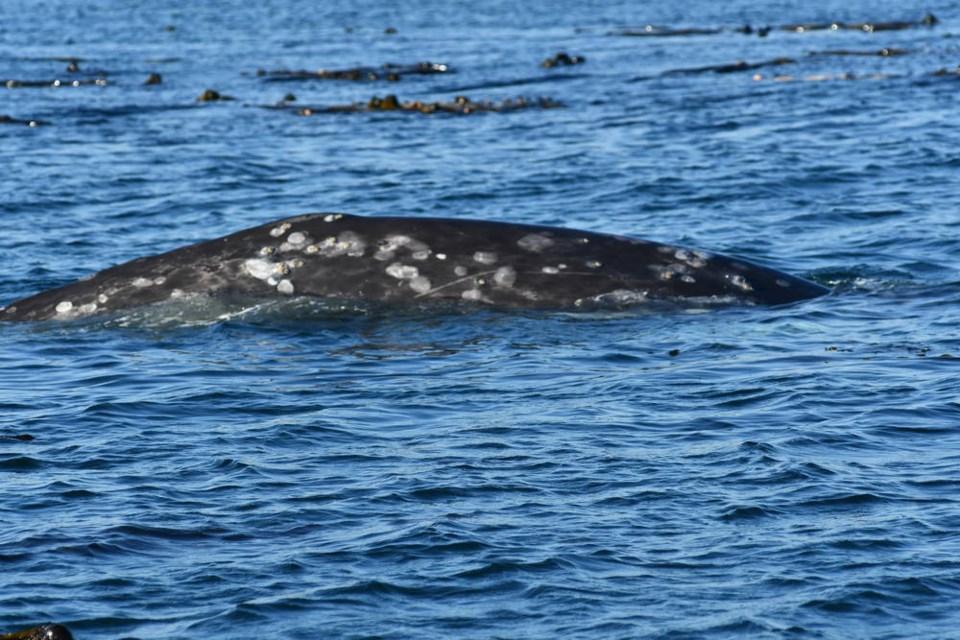Antibiotics have been administered to a grey whale that has discoloured skin and lesions in an area where a satellite tracking tag was implanted last fall.
Canadian and U.S. whale experts and veterinarians are watching over the whale as it feeds off herring spawn and swims off the west coast of Vancouver Island.
Officials say the whale appears to be active and doing well.
“The whale is fairly robust, it’s feeding,” said Marjorie Mooney-Seus, a spokeswoman for the National Oceanic and Atmospheric Administration in the United States, which administered the tag in September.
“It is behaving normally and making quite long trips up and down the coast of Vancouver Island.”
The whale is part of a group of 250 that spends summers feeding in the waters off Oregon, Washington states and B.C. A larger group of about 20,000 whales moves north to the Bering and Chukchi seas for food every year.
The tags are designed so that the whale’s body will reject them over time and heal over, a process that can take from one month to over a year.
Photos show the tag protruding from a patch of the whale’s flesh, which appears white around the foreign object. About 10 centimetres of the 28-centimetre-long tag has moved out of the body so far.
No lesions were seen in the months following the tagging, but a whale monitor in Barkley Sound off Vancouver Island spotted a lesion around the tagging site last month, along with two more lesions on the opposite side of the animal.
The discovery of the lesion prompted the international team to take action, and the whale received antibiotics via a dart gun on March 31 and April 1.
Breath samples were collected to find out if the whale may have a fungal infection. Those results won’t be available for at least two weeks, Stephen Raverty, a veterinary pathologist with B.C.’s Ministry of Agriculture, said Tuesday.
An observer has reported the whale is coughing up some mucus, he said. That could indicate irritation in its airway, an infection or some other concern.
Part of the reason for the antibiotics was address the possibility of an underlying respiratory infection.
The Committee on the Status of Endangered Wildlife in Canada has classified this population of grey whales as endangered. It is also up for consideration for protection under Canada’s Species at Risk Act.
U.S. officials do not consider this population separate from the larger group, which is deemed to be robust and is not considered endangered.
NOAA is carrying out a tagging project aimed at learning more about this segment of the grey whale population. It is intended to collect information about their habitat, where they feed, and if they are in any marine traffic lanes.
Concerns about tagging came up in 2016 when an endangered southern resident killer whale, L95, died after being tagged by NOAA. That resulted in tagging of that group of whales being halted.
Raverty said it is believed that a fungal infection killed L95.
The U.S.-based Center for Whale Research is opposed to satellite tagging research on southern resident orcas, saying it is too invasive and risky.
Shafts and petals on tag attachments penetrate deep into a whale’s tissue and can carry traces of the surface skin, which is in contact with pathogens and fungi in a whale’s environment, the centre said. The wound created by a dart creates a pathway for infection, especially if the device breaks inside the animal.
— With a file from The Canadian Press



